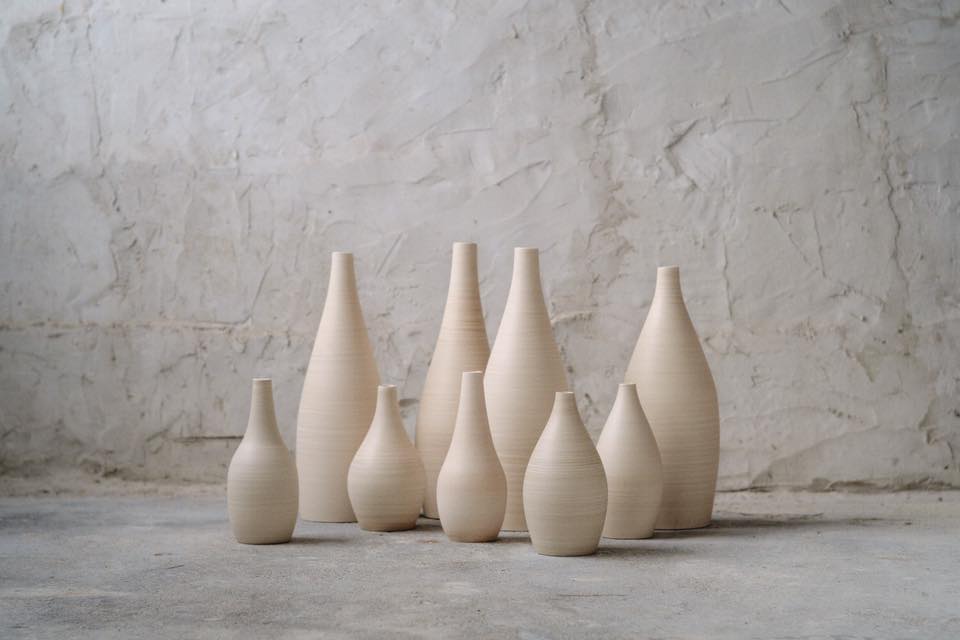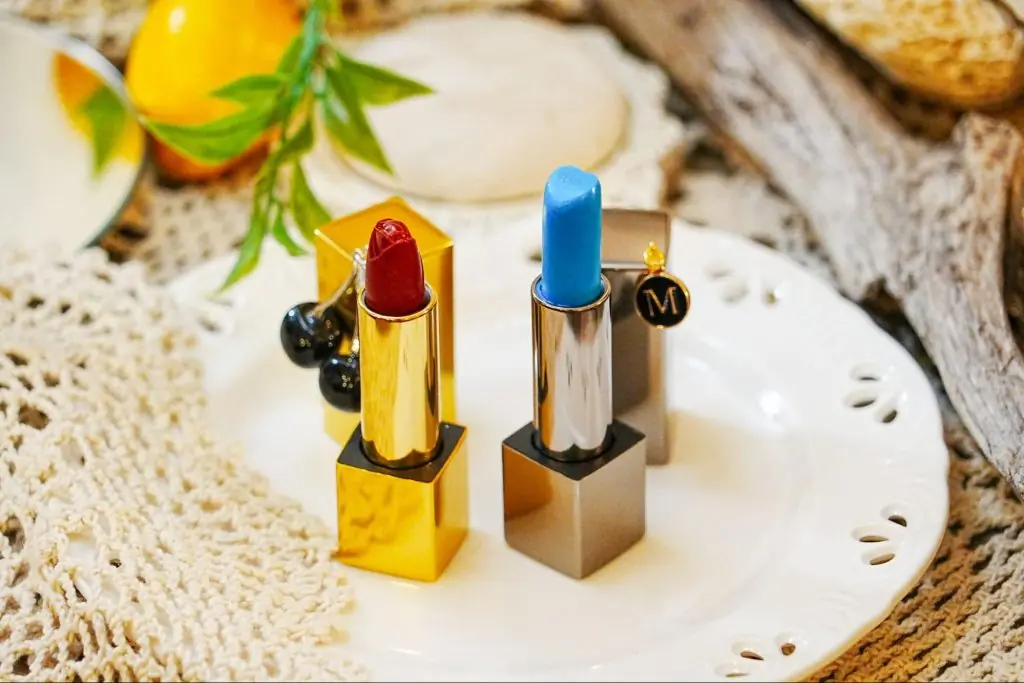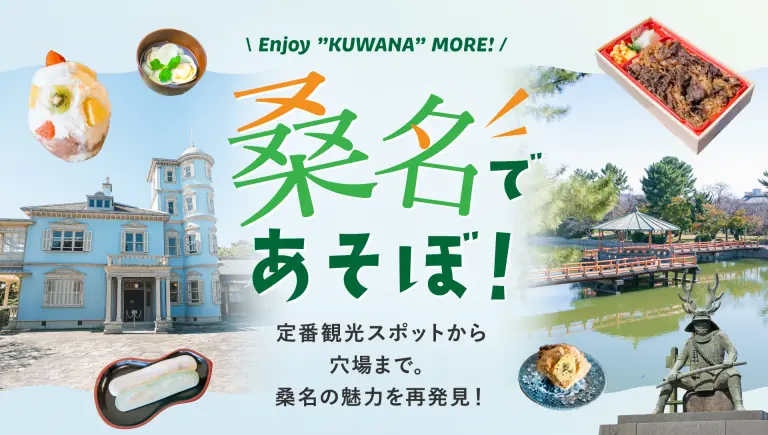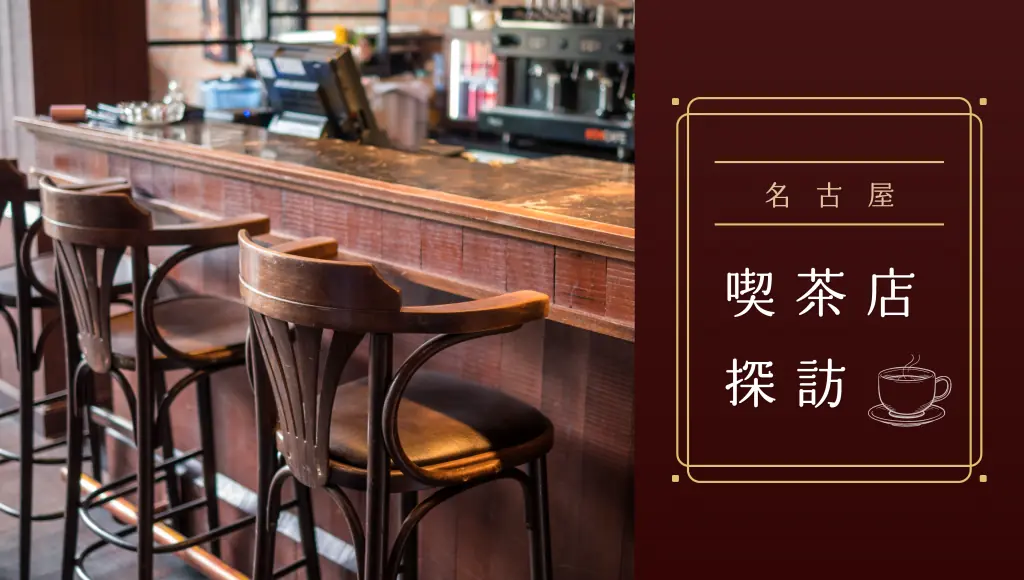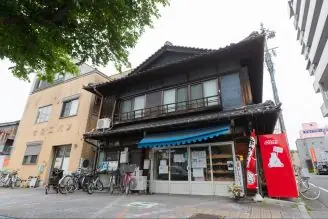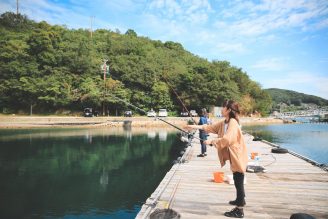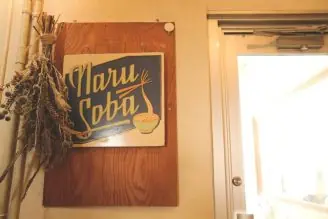目次
ドロドロに溶けた熱いガラスに息をふ〜っと吹き込み形をつくる「吹きガラス体験」。いつかは挑戦してみたいなという方も多いのではないでしょうか?
そんな吹きガラス体験ができるのが、岐阜県多治見市にある「Tickleglass(ティクルグラス)」。ガラス作家として活動されている松下祐子さんの工房です。
今回は、Tickleglassにて人生初となる吹きガラスにチャレンジしてきました!


22歳のおばあちゃん看板猫のマツちゃんがお出迎えしてくれました!
さっそくTickleglassにやってきました。場所は、中央自動車道多治見インターより車で約15分、JR太多線姫駅から徒歩約10分。田畑に囲まれた自然豊かな場所にあります。

講師の松下祐子さん


工房内には、松下さんのカラフルでほっこりする作品がずらり。見ているだけでもワクワクしますね!
さっそく吹きガラス体験スタートです!
ステップ① つくりたいデザインを決める

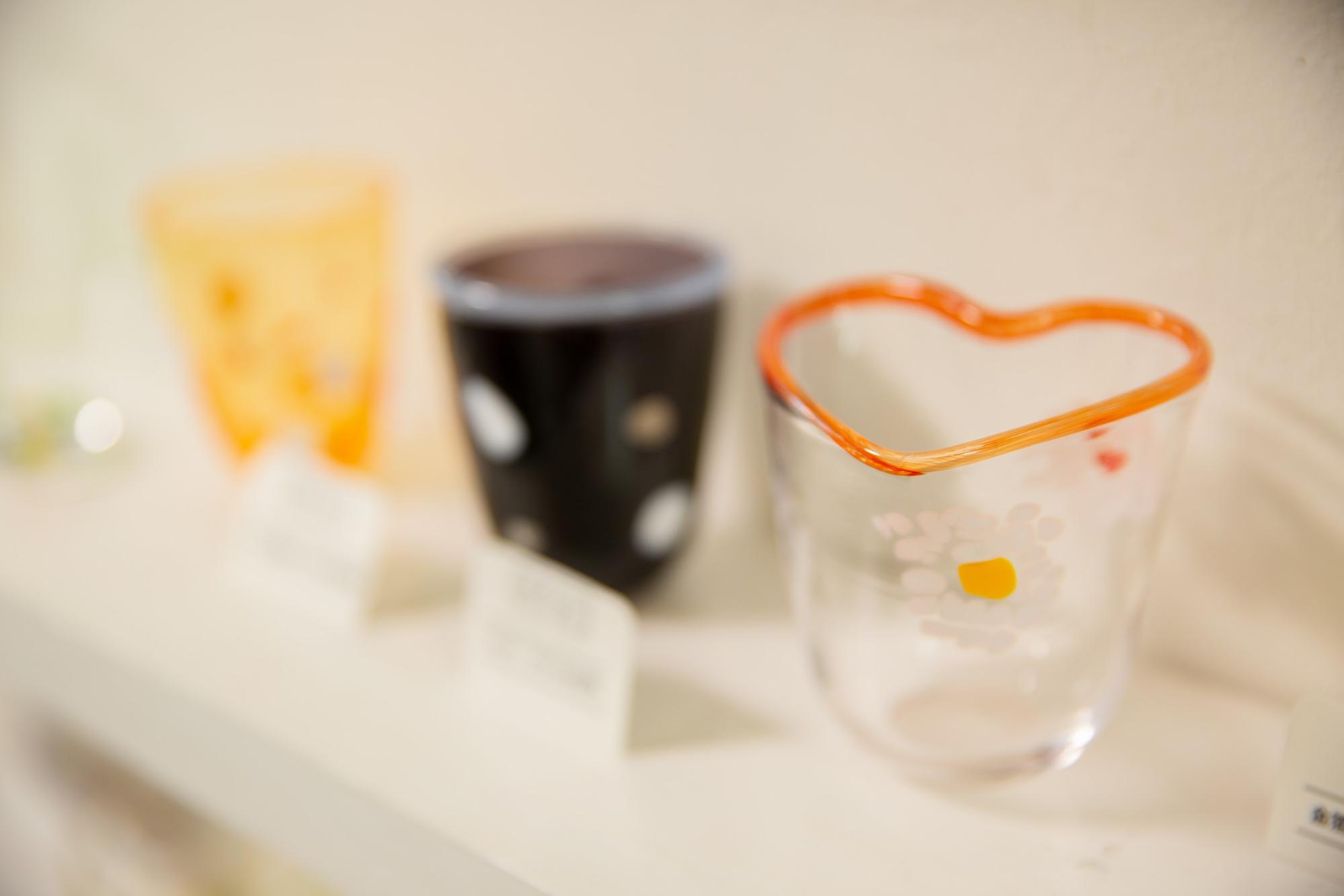
まずは、つくりたいデザインを決めます。グラス以外にも、風鈴・はしおき・水玉ボウルなどもつくれますよ。
<吹きガラス体験メニュー>
●グラス・一輪挿し製作●
「お気軽コース」
1 個 3,500 円
色 12 カラー・模様 2 種類・形 1 パターンずつ「オリジナルコース」
1 個 4,000 円 色 50 カラー・模様 3 種類・形 6 パターン●ボウル製作●
1 個 4,000 円(色 12 カラー・模様 2 種類)
1 個 4,500 円(色 50 カラー・模様 3 種類)●ペーパーウェイト製作●
ラウンド型 1 個2,800円
りんご 1 個3,500円
りんご(大きめ)1 個 3,800円
りんご(葉っぱ付き)1 個 4,000円【季節限定製作】
●夏(5 月〜) ●
風鈴製作 1 個 4,000 円(色 12 カラー・模様 2 種類)
1 個4,500 円(色 50 カラー・模様 3 種類)
●冬(1 月〜)●
お雛様制作 7,500 円(2 対製作・台座・箱付き)<オプション>
色付きグラス +500円
台座付きグラス +500円
口巻きグラス +500円
はしおき 1個500円
マーブル色つぶかなり多め +500円
水玉色つぶ多め +500円
水玉色つぶかなり多め +1,000円
金赤・ピンク系色粒 +500円
金箔2cm角 +1,000円
グラスの底磨き加工(ポリッシュ+名前彫り) +500円
ステップ② 色並べ


デザインが決まったら、お次は色並べ。「マーブル模様」「水玉模様」のどちらかを選択し、ガラスに色をつける色粒を選びます。


色数は透明・不透明合わせて50種類ほど。どの色も素敵で迷ってしまいます。

ちなみに、暖色系は(色を発色させる鉱物の兼ね合いで)暖色系以外の色が重なると褐色になってしまうので要注意。
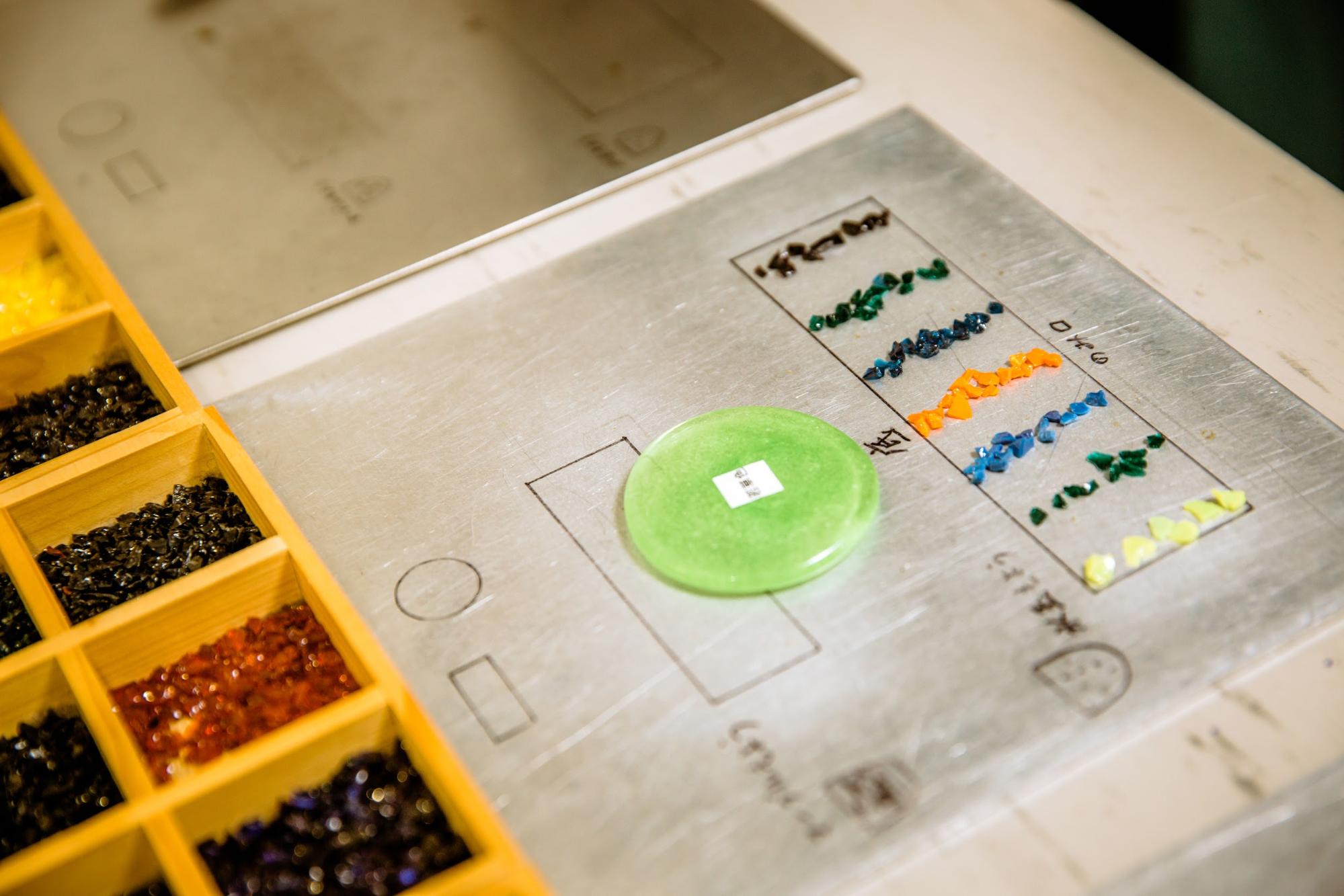
色並べが完了しました。ストライプの水玉模様に若草色の口巻き(リップ)を付けることにしました。
ステップ③ 制作


ゴーグル・軍手・アームカバーを装着し、いよいよ吹きガラスの制作スタートです!果たしてうまくできるのでしょうか……ドキドキ。



1,155℃の溶解炉からガラスの種を取り出し、まずは優しく吹きます。何回かに分けながら、少しず〜つ膨らませていきます。

続いて、グラスに気泡を入れるための重曹を表面に付けていきます。重曹を付けた後、更にガラスを上に被せるとガラスとガラスに挟まれた重曹が発砲して気泡になります。


先ほど並べた色粒をつけます。水玉模様はそのまま絵柄になるので、慎重に。鉄板の上でガラスをコロコロさせ、付着させていきます。

1,200℃のガス窯に入れ、色粒をなじませます。窯に近づくと想像以上の熱さです!

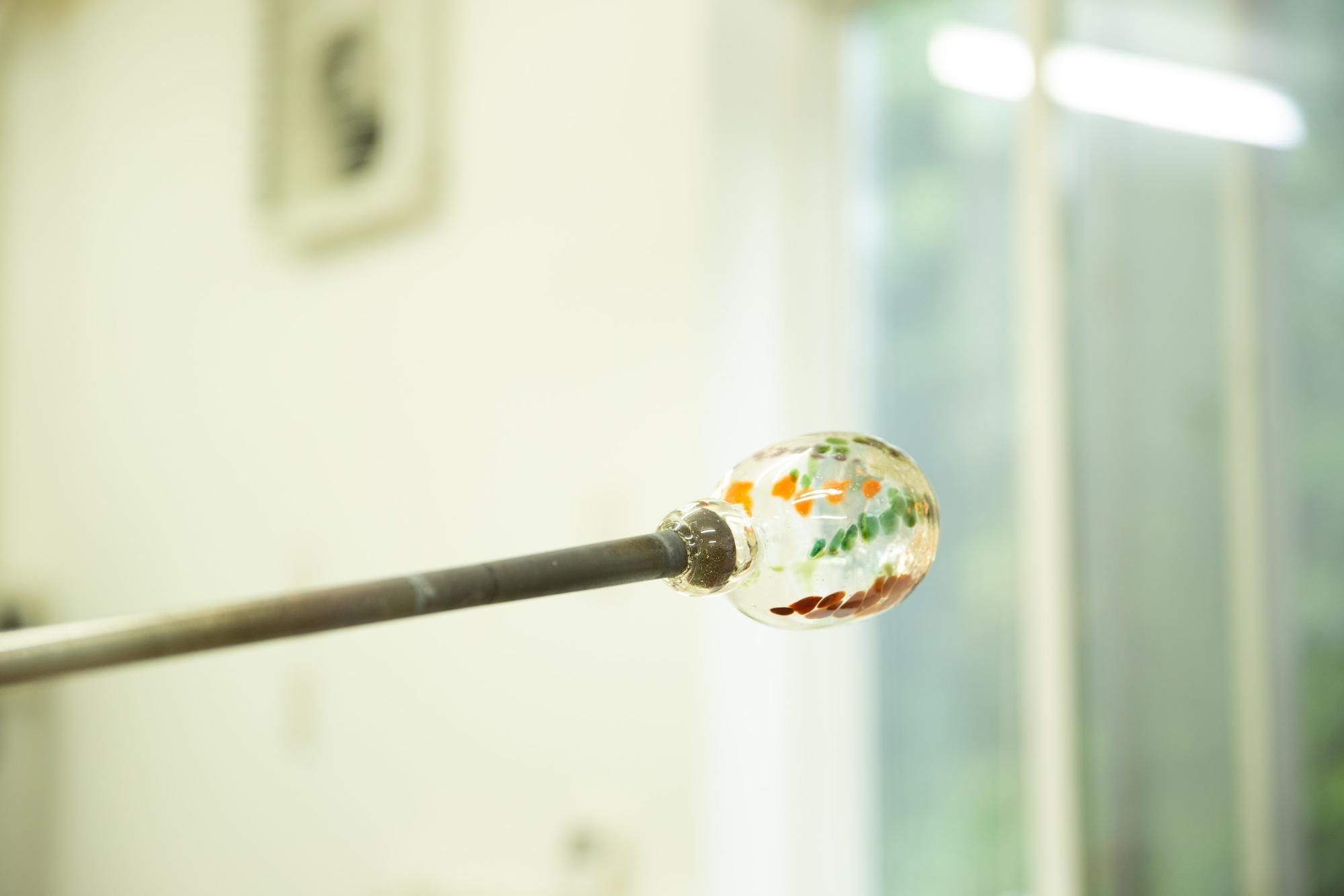
再び吹いて、ガラスを大きくしていきます。先生が「強く吹いて〜」「今度は少し弱く〜」とアドバイスしてくださるので、きれいに膨らんでいきます。だいぶグラスの形に近づいてきましたね!


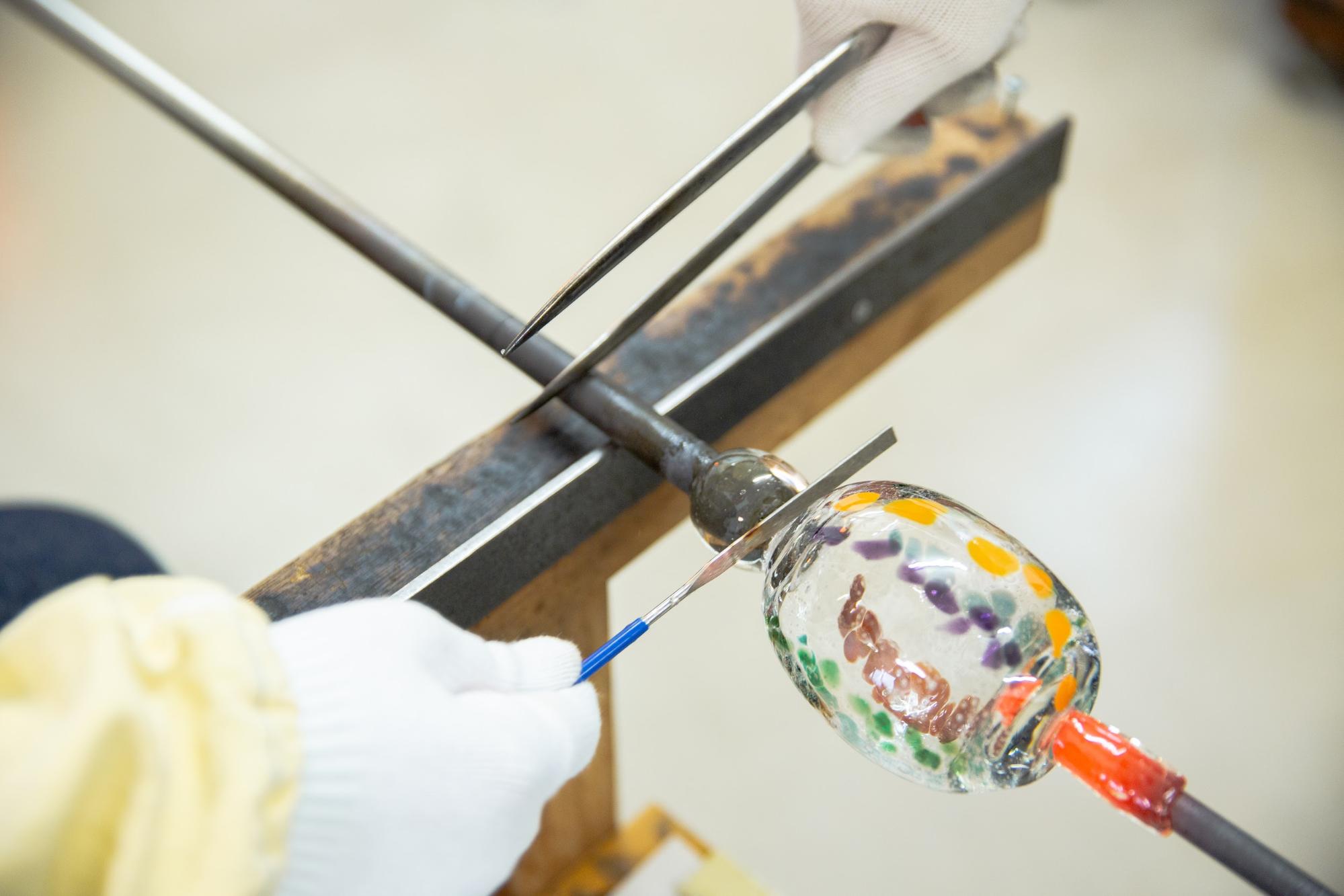
続いては、別の竿に移動させる工程。根元の部分をヤスリでゴシゴシと削り、最後にハンマーでぽんっと叩くと、無事に移動できました。


再びガス窯で熱します。くるくると一定の速度で竿を回しながら、出したり入れたりを繰り返します。

お次はリップをつけます。この工程は難しいので、先生にお任せしましょう。


最後に口を広げていきます。ロウをたっぷり付けて、少しずつ広げていきます。

無事にグラスが完成しました!!完成したグラスは、500℃の窯に入れて吹きガラス体験終了です。

続いては、マーブル模様の制作の様子もご紹介します。

先ほどと同様、ガラスをコロコロとして色粒を付着させていきます。
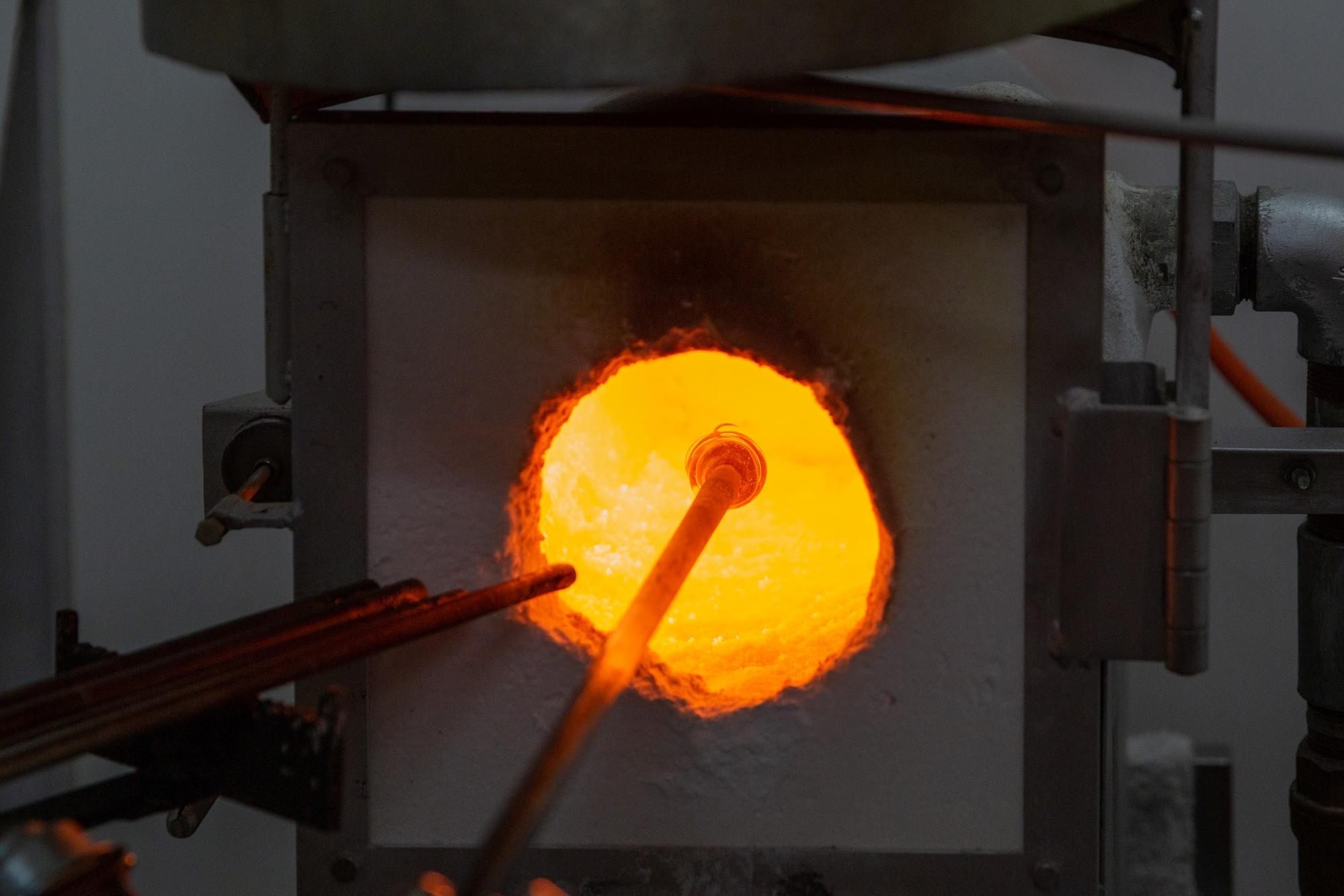

マーブルの場合は、ガス窯でガラスと色粒をなじませ、少し垂らして混ぜていきます。きれいなマーブル模様が出来上がりました。

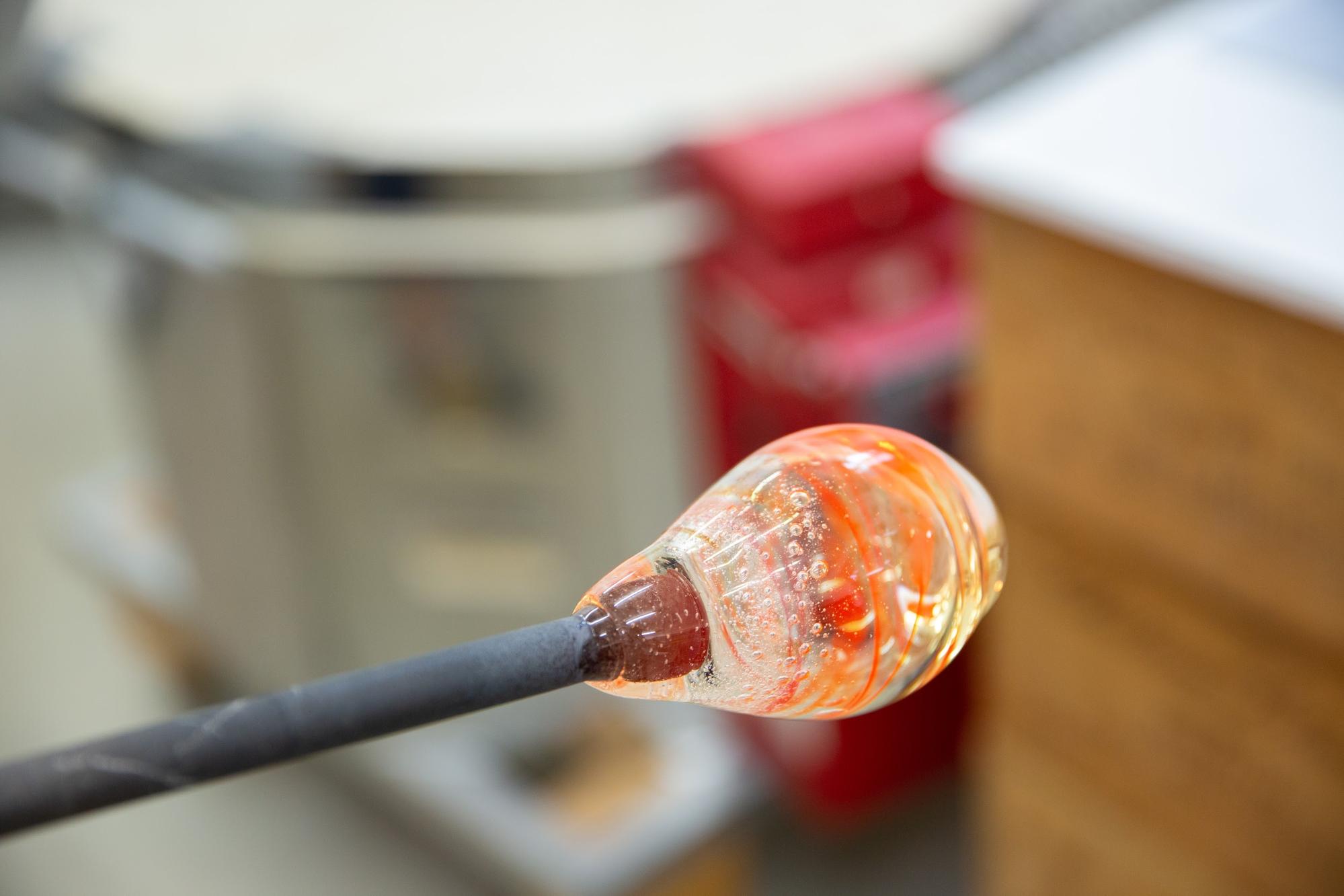
息を吹き込み、ガラスを膨らませていきます。大きめのグラスにしたいので、強めに吹いていきます。


こちらのグラスには台座をつけることに。


台の上に乗って、上からグラスと台座をくっつけます。緊張しましたが、なんとか中央につけることができました。ほっ。


口を広げて、台座付きグラスの完成です!見本よりもかなり大きめの仕上がりになりました。
できあがりがりまで1週間ほど

受け取りは、郵送もしくは工房にて。約1週間ほどで作品が届きました。どんな仕上がりになったのかな〜と待つ時間も幸せでしたよ。
<発送>
1〜2個:900円|3〜4個:1,200円|5〜6個 1,400円


こちらは丸っとしたグラスに、7色のストライプを並べて水玉模様に。若草色のリップがポイント!気泡もしっかり入って涼しげ。暑い日にジュースや麦茶が飲みたくなりますね。


インディゴブルー・ターコイズブルー・ヒヤシンス・シアンブルーを並べたマーブル模様に。お尻がプリっと出ているようなキュートな形のグラスが出来上がりました。これも手づくりならでは。

こちらは、色付きガラスに。パールオールドゴールド・タンポポ・細かめ白・濃いめのセラドングリーンを並べて水玉模様にしました。ベースを色付きにすることで、ぐっと大人っぽい仕上がりに。

夏にぴったりな風鈴も。大粒と小粒の白とレモンイエロー・ハニーイエローを並べて水玉模様に。鳴子は南伊勢の特産であるミカンをイメージして暖色にしました。夏のギフトにしても良さそうですよね。
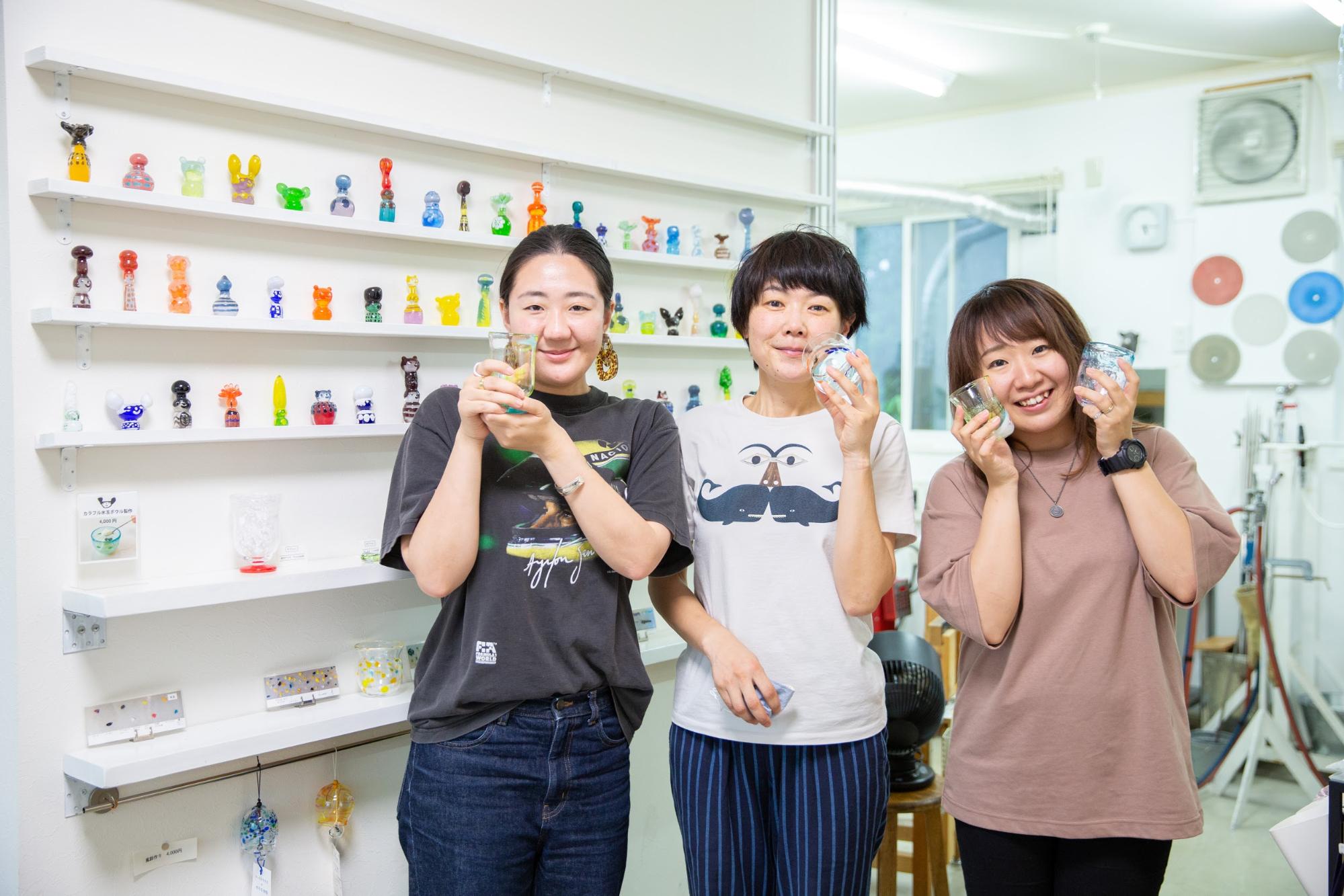
松下さん、ありがとうございました!
いつかは挑戦してみたいなと思っていた吹きガラス。うまくできるかな、熱くないかなと正直不安な気持ちもありましたが、想像の何倍もすてきな体験でした。手間暇かけて完成するグラスは、ギフトにもぴったり!ご家族や恋人への贈り物としてつくりに来られる方も多いそうですよ。
選ぶ色粒、ガラスの吹き加減、形の整え方などで、全く同じグラスは生まれません。この夏、あなただけのオリジナルのグラスをつくってみませんか?









